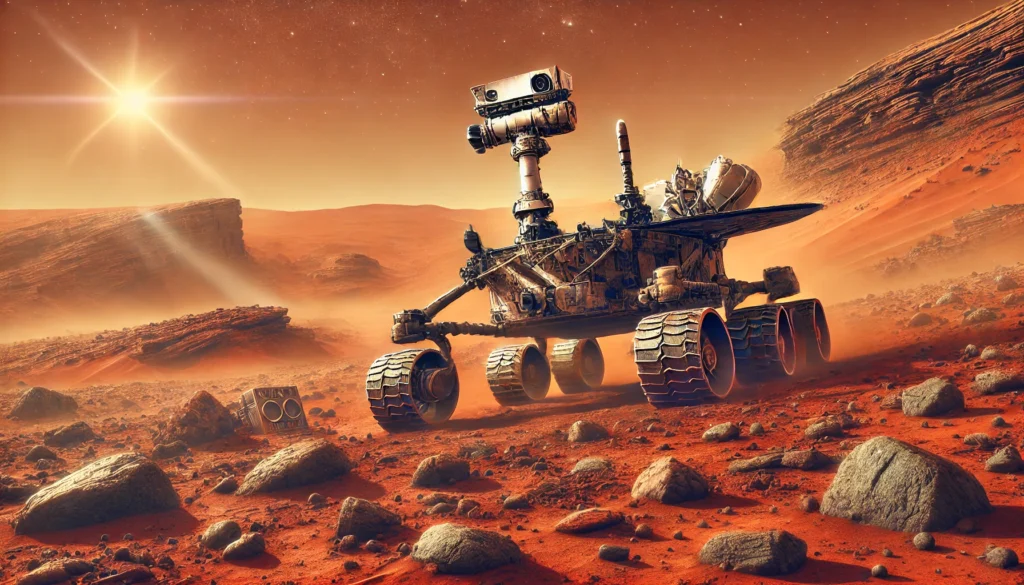Did you know that scientists have discovered thousands of planets beyond our solar system, some of which might be capable of hosting life? This tantalizing fact is one of many that fuels the exciting field of astrobiology, a scientific discipline dedicated to understanding life in the universe. From the deep seas of Earth to the icy moons of Jupiter, astrobiology asks one fundamental question: Are we alone in the universe?
Introduction: What is Astrobiology?
Astrobiology is a branch of science that explores the origins, evolution, distribution, and future of life in the universe. This interdisciplinary field combines biology, chemistry, astronomy, geology, and even philosophy to answer one of humanity’s oldest questions. With advancements in technology and space exploration, the search for life beyond Earth is no longer the stuff of science fiction—it’s a scientific endeavour that could redefine our place in the cosmos.
The Universe: A Vast Canvas for Life
The universe is unimaginably vast, hosting billions of galaxies, each with billions of stars and potentially even more planets. Among these, some planets exist in the “Goldilocks Zone”—a region where conditions are “just right” for liquid water to exist. Scientists consider water a key ingredient for life as we know it.
For example, NASA’s Kepler mission has identified over 5,000 exoplanets, with a fraction of these categorized as potentially habitable. One of the most intriguing finds is Kepler-452b, often called “Earth’s cousin.” It lies in a star system similar to ours and could have the right conditions to support life.

Life Beyond Earth: What Could It Look Like?
When imagining extraterrestrial life, Hollywood often gives us green, humanoid aliens. The reality, however, might be much stranger—or simpler. Most astrobiologists believe that if we find life beyond Earth, it will likely be microbial. Microbes, such as bacteria, are incredibly resilient and can thrive in extreme environments on Earth, from acidic hot springs to Antarctic ice.
One fascinating example of extremophiles (organisms thriving in extreme conditions) is tardigrades, also known as water bears. These tiny creatures can survive the vacuum of space, extreme temperatures, and radiation. Could alien microbes or organisms with similar adaptability exist on other planets or moons?
Case Studies in Astrobiology
Mars: The Red Planet
Mars has long been a focus for astrobiologists. With evidence of ancient riverbeds, polar ice caps, and the detection of organic molecules by NASA’s Curiosity rover, Mars is a top candidate for harbouring past or present microbial life. The Perseverance rover, currently exploring the Jezero Crater, is actively searching for biosignatures—chemical or physical markers of life.
Europa: Jupiter’s Icy Moon
Europa, one of Jupiter’s largest moons, is another exciting prospect. Beneath its thick, icy crust lies a global ocean, kept warm by tidal heating. NASA’s upcoming Europa Clipper mission aims to investigate this ocean and assess its potential habitability.
Titan: Saturn’s Methane-Rich Moon
Titan, a moon of Saturn, offers an entirely different kind of environment. Its surface features rivers and lakes of liquid methane and ethane. While alien life here would differ from Earth’s water-based organisms, Titan proves that life could emerge in conditions vastly different from our planet.
The Role of Space Agencies and Technology
NASA (National Aeronautics and Space Administration): NASA leads many of the efforts in astrobiology. From the James Webb Space Telescope (JWST) to the Mars rover missions, the agency is at the forefront of exploring habitable environments in the cosmos.
ESA (European Space Agency): The ESA contributes to missions like Rosetta, which studied comet 67P, revealing organic compounds that are the building blocks of life.
Private Players: Companies like SpaceX, founded by Elon Musk, aim to make interplanetary travel a reality. SpaceX’s mission to colonize Mars could provide an unprecedented opportunity to study the planet up close.
The Challenges of Searching for Extraterrestrial Life
Astrobiology is not without its challenges. The vast distances between stars make interstellar travel currently impossible, and detecting signs of life remotely is complex. Instruments must be highly sensitive to detect faint biosignatures, and researchers face the daunting task of interpreting ambiguous data.
What Does It Mean if We Find Life?
The discovery of life beyond Earth would be a paradigm-shifting moment in human history. It would expand our understanding of biology and perhaps reveal a second genesis of life, suggesting that life is a common occurrence in the universe.
But it would also pose ethical and philosophical questions: How do we interact with extraterrestrial life? What precautions should we take to avoid contamination, both in their world and ours?
Conclusion: Are We Alone?
Astrobiology reminds us that we are part of a vast, interconnected cosmos full of mysteries waiting to be uncovered. Whether through microbial fossils on Mars or alien oceans teeming with life beneath Europa’s ice, the search for life beyond Earth is as much about understanding ourselves as it is about exploring the universe.
So, keep looking up. The next great discovery could be just around the cosmic corner.
Author’s Note
As a lifelong enthusiast of space exploration, I find astrobiology particularly inspiring because it bridges science and imagination. The search for life beyond Earth not only challenges our scientific boundaries but also invites us to dream big.
G.C., Ecosociosphere contributor.





Comments
“Great content, learned a lot from this post!”
“Amazing post, keep up the good work!”